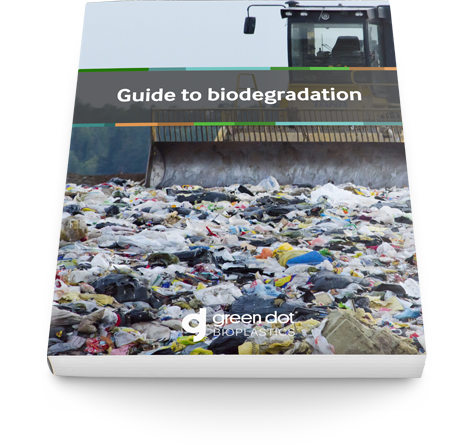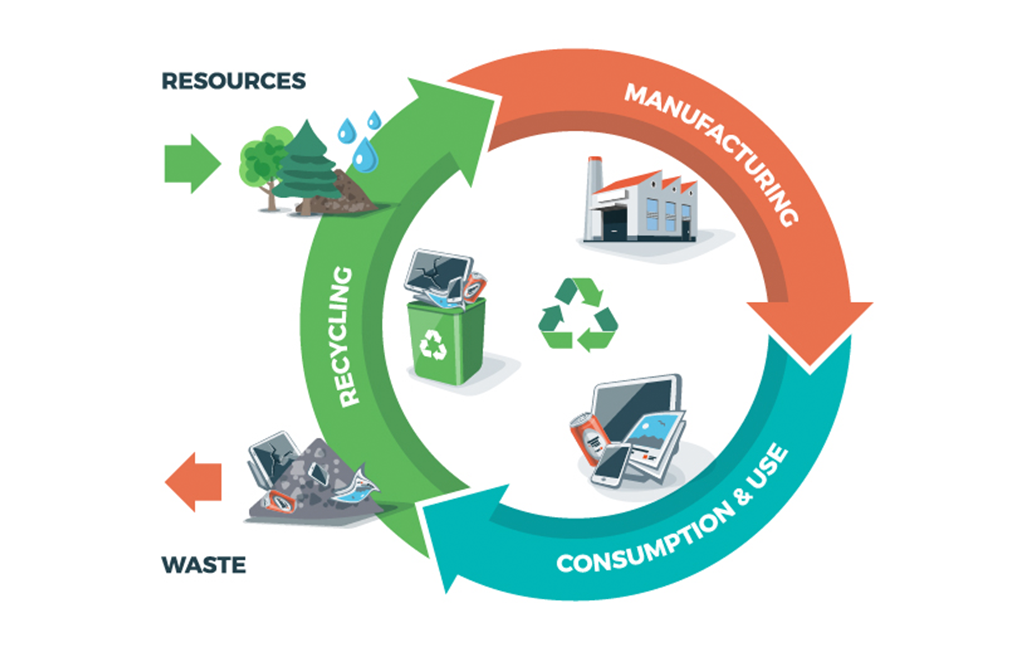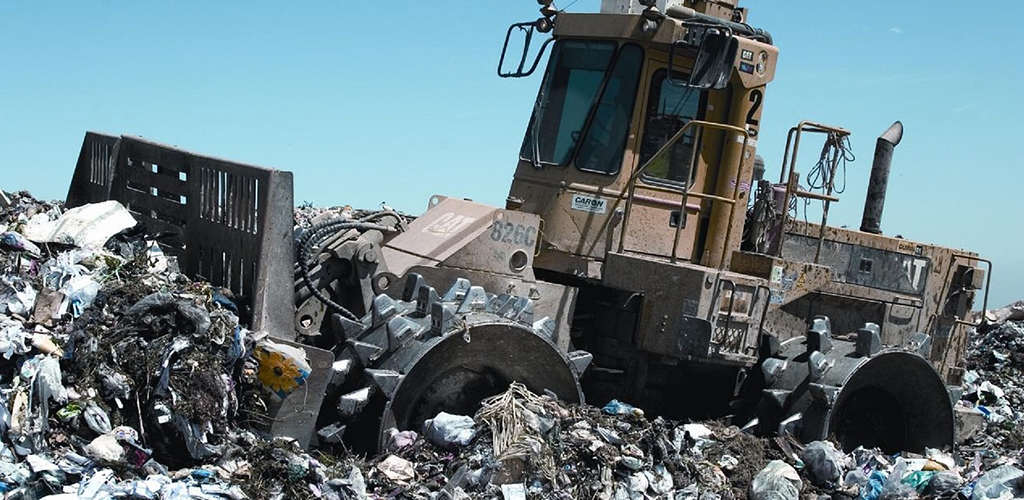Leveraging biodegradable plastics to divert waste from landfills
Plastic is ubiquitous. It’s used in everything from your shampoo bottle to your golf shirt. Unfortunately, traditional petroleum-based plastics are notorious contributors to landfill waste. According to a 2017 study in Science Advances, of the 8.3 billion metric tons of virgin plastics produced since the 1950s, about 6.3 billion metric tons have been disposed of in landfills or the natural environment. If this trend continues, that number could increase to 12 billion metric tons.
Municipal solid waste landfills (i.e., landfills) are assigned areas of land or excavation that receive household waste. They can only be built in “suitable geological areas away from faults, wetlands, floodplains or other restricted areas.” In addition, they need a composite liner (i.e., a geo-membrane) two feet above its compacted clay soil lining to protect groundwater and the underlying soil from leachate releases. Despite the standards in place, disposed products degrade and produce landfill gas composed of methane and carbon dioxide; both gases are highly effective at trapping heat in the atmosphere, especially methane.
Landfills are only designed to store waste, not break them down. Unfortunately, the rate at which we are producing waste outpaces the rate of natural biodegradation. Consequently, landfills are quickly filling up, which increases air, water and soil pollution. In 2014 alone, 136 million tons of municipal solid waste were landfilled, 18% of which were plastic.
The disposal of non-biodegradable plastics is unsustainable because they often follow a linear economic model where virgin products are manufactured, used once and disposed of, accumulating in landfills or the natural environment.
While recycling is one solution to divert waste from landfills and reduce the production of virgin materials, only 9% of plastics made since 1950 have been recycled. Recycling simply delays disposal, which is why biodegradation and composting should also be considered as solutions. Biodegradable plastic aids in directing waste away from landfills and to composting facilities. This not only decreases the burden placed on landfills but also lowers methane emissions.
Looking at alternative solutions to recycling will become more important in light of recent global events. For decades, the United States has relied on China to recycle its plastic waste. As of January 2018, China is no longer accepting plastic in an effort to protect their citizens’ health. This puts more pressure on domestic recycling infrastructure, forcing the U.S. to further explore alternate waste solutions such as industrial composting.
Certifying plastic products for industrial composting
While there are a variety of plastics on the market that claim to be biodegradable, industrial composting facilities only accept certified compostable plastics, which is why understanding the various certifications is critical before beginning manufacturing.
Products and packaging that are certified compostable won’t impede commercial composting operations or contaminate the compost. Common certifications include ASTM, BPI and CMA.
ASTM D6400
ASTM D6400 certifies that plastics and products have been developed to compost in municipal and industrial aerobic composting facilities. The certification ensures that products will biodegrade at a proper rate in a facility.
Biodegradable Products Institute (BPI)
For a product to be certified by BPI, it must first be certified ASTM D6400-12. BPI testing is conducted by independent labs that will ensure products can biodegrade at a comparable rate to other compostable materials so that large plastic fragments don’t need to be screened out.
Composting manufacturing alliance (CMA)
The CMA field testing program specifically certifies that food service ware (e.g., bags, utensils, plates and wraps) is compostable in facilities. CMA will provide insights on how well these products will break down in a composting facility. Ultimately, the program strives to divert food waste from landfills and “minimize contamination in urban feedstocks.”
The challenges of industrial composting
Ken Powell, the Public Service Executive at the Kansas Bureau of Waste Management said the key driver for bringing composting facilities to a city is policy and access but cautions that “cost, education and infrastructure are needed to get people composting.” More specifically, Sarah Ryan, the Marketing Coordinator at St. Louis Composting, notes that some challenges include educating consumers and companies about the differences between bio-based, biodegradable, recyclable and compostable plastics as well as implementing a universal labeling system to prevent contaminants from entering composting facilities.
Addressing contamination challenges
Contamination is a key challenge for composting facilities. Improperly sorted plastics can contaminate recycling streams or feedstock and get buried landfills. Most contamination results from petroleum-based plastics entering facilities due to:
- Inaccurate labeling.
- Confusion on disposal instructions.
- Ignorance of best waste management practices.
Not all bioplastics are compostable, which is why inconsistencies in labeling and definitions puzzle customers. Although contamination is avoidable, a systematic solution will be needed to eliminate the issue entirely, which could include:
- Educating customers.
- Implementing fines for improper disposal.
- Rejecting contaminated loads.
Processing biodegradable plastics
To leverage the benefits of biodegradable plastics, more products will need to be produced with these materials. A study by the Federal Ministry of Food and Agriculture in Germany examined the manufacturability of biodegradable plastics as compared to conventional plastics based on processing parameters such as shrinkage behavior, plasticizing capacity and processing temperature for injection molding. The study found that, overall, the processing of biodegradable plastics is similar to that of conventional plastics and reasonable cycle times can be achieved.
As with switching from one conventional plastic to another, though, switching to bioplastics requires the injection molder to make material-specific modifications to their processing parameters. For example, an injection molder might need to dry the plastic prior to processing, lower processing temperatures or adjust the cavity parameters to account for different shrinkage behaviors between the two materials.
While pre-drying is a key processing consideration for all bioplastics, it is critical for biodegradable plastics. Excess moisture present in biodegradable plastics will not only cause processing problems (i.e., decreased mechanical performance and increased melt index), but the moisture may cause hydrolysis in the material resulting in a loss of molecular weight while the product is in use. To prevent such issues, the processing recommendations set forth by the biodegradable plastic manufacturer should always be followed.
A common misconception is that biodegradable plastics, as a category, exhibit a narrow range of physical properties. In reality, material manufacturers are now capable of alloying and blending biodegradable polymers (e.g., PLA, PBS, PBAT, etc.) to meet specific performance parameters without sacrificing compostability. The percent elongation of PLA, a generally rigid polymer, can be increased as much as 18.7% when compounded with a compostable elastomeric bioplastic. Using the same impact modifier, the impact strength of PLA can be increased more than 400%.
Diverting waste away from landfills with compostable plastics
Governmental incentives and consumer expectations need to first shift towards composting and biodegradation. Doing so will influence the plastic industry to value biodegradable and compostable plastics over petroleum-based plastics. The current waste management system affords consumers and companies with convenience. However, it took decades for it to come to fruition. As such, implementing a circular economy, where plastic is biodegraded, recycled or composted, and systemizing it to become convenient like the current system, will take time.
Read our guide to biodegradation to learn more about the mechanisms behind biodegradation and how the process can be systematized on biodegradable plastics to divert waste from landfills and reduce plastic pollution. Download your copy today.





